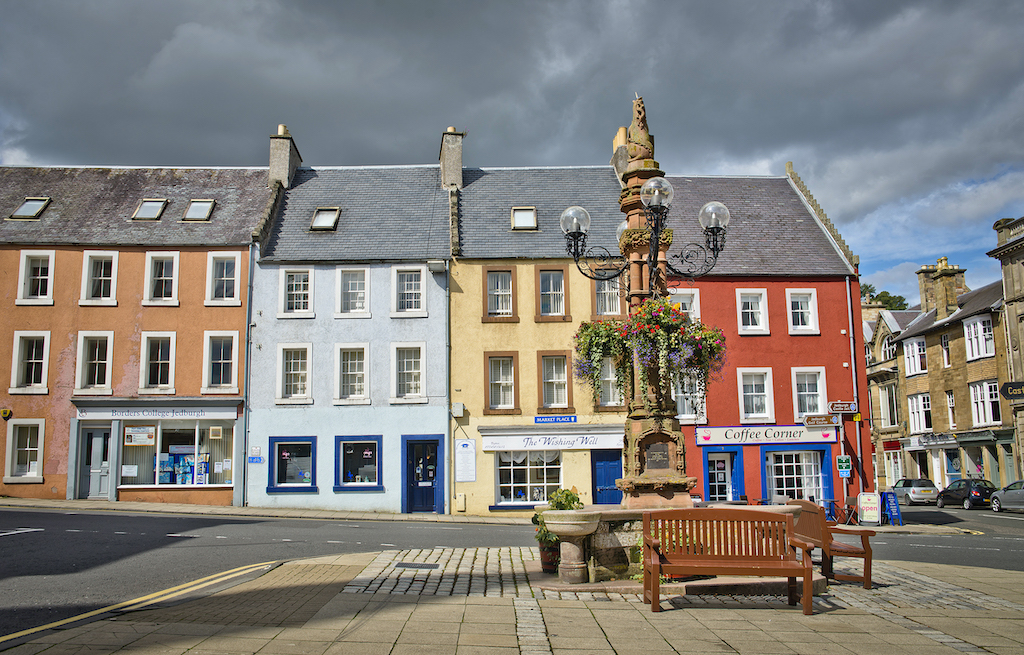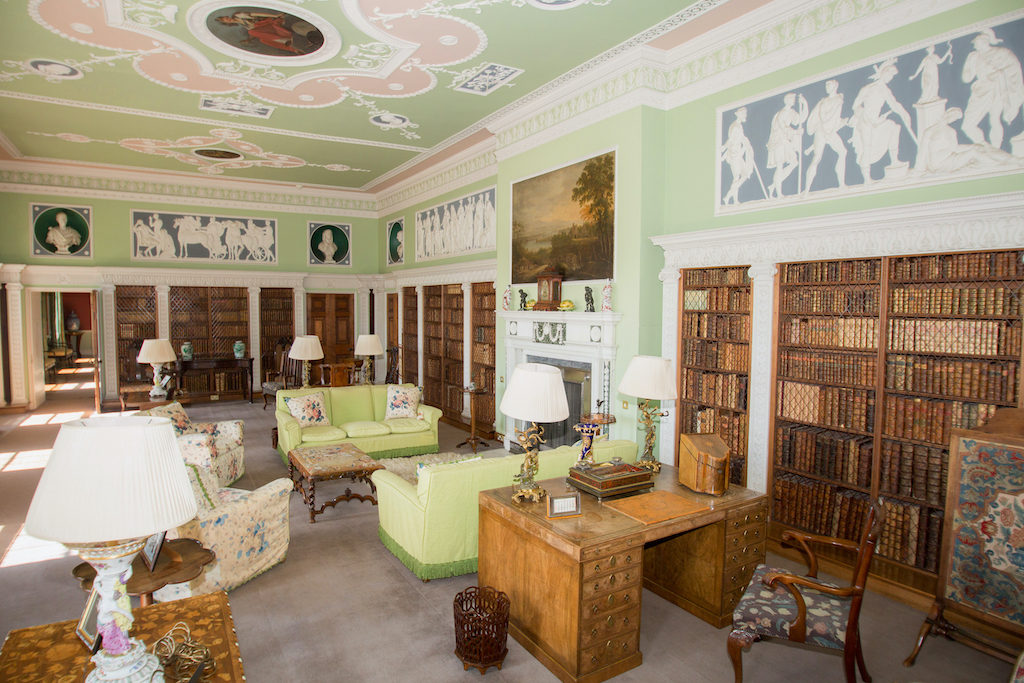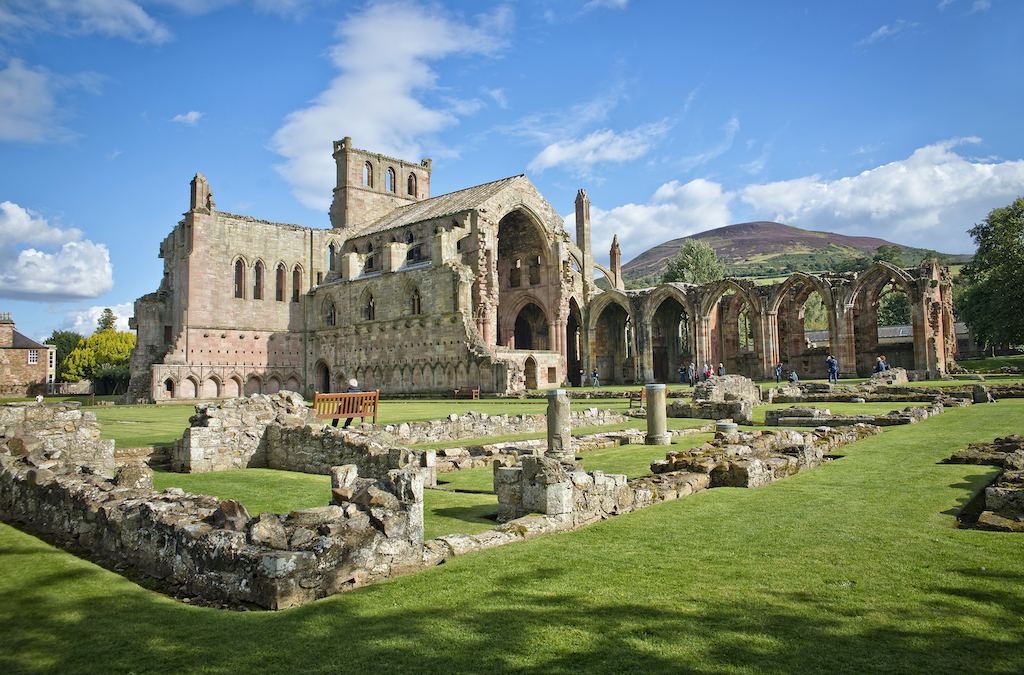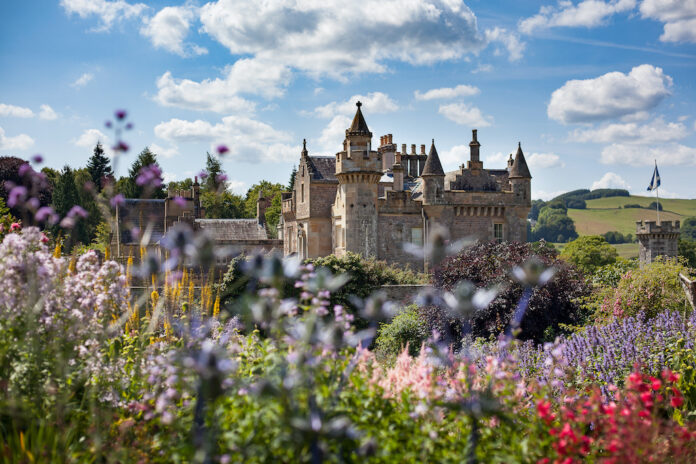Though often overlooked in favour of the Highlands, the Scottish Borders reward visitors with scenic landscapes and a wild and wayward history
Words: Jenny McKelvie
The border between Scotland and England stretches from the rolling hills and moorland in the west, through gentler valleys to the high agricultural plains of the east, and on to the rocky Berwickshire coastline with its secluded coves and picturesque fishing villages. Swirl in chocolate-box-pretty market towns, dramatic ruined abbeys and some of Britain’s grandest castles and stately homes and it’s easy to understand why people fall deeply in love with the region.
The Borders have always been sought-after: raids and counter attacks between jealous rivals in England and Scotland were the norm for hundreds of years. On occasion these skirmishes escalated into all-out combat, with deadly results for King James IV of Scotland and his son and heir King James V. Even after the ‘last’ border war between the English and the Scots in 1571, the lawless activities of the so-called Border Reivers continued. The Reivers – from the old English word for ‘rob’ – frequently crossed the border, carrying off livestock, valuables and even human hostages.
A visit to this once unruly region is remarkably civilised these days. You can take the sleeper train from London and wake up to breakfast in Edinburgh, from where the region is just a short hop by train or car. The Borders are beautiful at any time of year but visit in the summer and you might be lucky enough to witness the annual Common Ridings, one of the world’s oldest equestrian festivals.

This spectacle of horsemanship and pageantry commemorates the turbulent days of the 13th and 14th centuries when townsfolk were forced to ride to their town’s boundaries on horseback to make sure that their rivals were not encroaching on their common land. One of the most colourful re-enactments takes place in Selkirk every June, where the highlight is a colourful cavalcade of hundreds of horses and riders.
Selkirk’s history is also intertwined with the life of the Borders’ most celebrated citizen, Sir Walter Scott, born 250 years ago this year. The writer, who penned romantic classics like Rob Roy, Ivanhoe and Waverley, served as the town’s sheriff between 1804 and 1832. Visitors can tour his baronial mansion Abbotsford, and see his beloved ‘Scott’s View’, a scenic spot where he would sit and reflect. It was the region’s wild natural beauty that inspired his much-loved novels and poems.
The architect Robert Adam is another famous name associated with the Borders, and you can visit one of his finest creations, Mellerstain House. Lauded for its elegance, lofty ceilings and handsome library, the house was actually built on the work already done by Adam’s father, with this immense masterpiece taking more than 50 years to complete.

Adam himself would have drawn inspiration from the Borders’ famous ruined abbeys: evidence of the many Cistercian and Augustinian monks that once lived here. The abbeys may have been sacked over the centuries, but their romantic remains stand proud and are open to ramble around. Once the grandest, Kelso Abbey was devastated in the mid-16th century as the land disputes between Scotland and England raged on. Despite this the Romanesque structure remains a stirring sight.
Jedburgh Abbey also endured centuries of attack, yet even today the majesty of its ornate arcades and Romanesque columns bear witness to King David I of Scotland’s clear message to England that his country held sway over the Borders.

Serenely sited on the banks of the River Tweed, the peaceful and secluded ruins of medieval Dryburgh Abbey provide an insight into the cloistered life of a monk. It is also a place of pilgrimage for fans of Sir Walter Scott, as the great man’s grave lies here.






 © 2024
© 2024